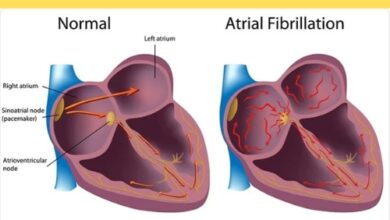Pregnancy changes the brain more than previously known, study finds

CNN — By producing one of the first thorough maps of the changes in the brain during pregnancy, researchers have significantly advanced our understanding of a topic that has received little attention.
According to a study that was published on Monday in the journal Nature Neuroscience, some brain regions may get smaller during pregnancy while maintaining improved connection. The study also found that “only a few regions of the brain remaining untouched by the transition to motherhood.”
The results are based on a single, healthy 38-year-old woman who was followed up with by the authors for two years following the birth of her kid and three weeks before to conception. The University of California, Irvine professor Dr. Elizabeth R. Chrastil underwent in vitro fertilization. The project was created by Chrastil, who also wanted to employ herself as the subject, as has been done in other studies.
During a news briefing on the study, senior study author Dr. Emily Jacobs, an associate professor in the University of California, Santa Barbara’s Department of Psychological and Brain Sciences, stated that there is “so much about the neurobiology of pregnancy that we don’t understand yet.” Furthermore, it’s not because women are so complex. It’s an effect of the biological sciences’ past disregard for women’s health. This is our first look at this fascinating neurological change in 2024.
It is estimated that 208 million women become pregnant annually, with 85% of sexually active women who do not use birth control expecting to fall pregnant within a year.
“A lot of the information about sex hormones and their potent neuromodulatory effects comes from animal studies, but the brain is an endocrine organ,” Jacobs stated. Brain imaging and endocrine assessments obtained from groups of individuals at a single point in time are typically used in human studies.
According to Jacobs, “that kind of group averaging approach can’t tell us anything about how the brain is changing as hormones ebb and flow from day to day or week to week.” “In this paper, we use precision imaging methods to study the brain’s response to major neuroendocrine transitions, such as the menstrual cycle, the circadian rhythm, menopause, and now, one of the largest neuroendocrine transitions a human can experience: pregnancy.” This lab at UC Santa Barbara
How pregnancy transformed a mother’s brain
The first-time mother underwent 26 MRI images and blood tests, which were compared to brain abnormalities seen in eight control subjects who were not pregnant by Jacobs and colleagues.
The authors discovered extensive reductions in the cerebral cortex’s gray matter volume and thickness by the ninth week of pregnancy, particularly in areas like the default mode network, which is connected to social cognitive skills. Gray matter is a crucial component of the brain that regulates speech, memory, and thought processes in addition to sensory perception. Over the course of a person’s lifetime, cortical thickness declines after peaking during childhood.
Increases in white matter microstructure and cerebrospinal fluid were also observed in the second and third trimesters of the scans, and these findings were associated with growing levels of progesterone and estradiol. Cerebrospinal fluid aids in the brain’s nutrient, defense, and waste elimination. White matter facilitates information processing and communication between brain regions.
Two years after birth, some modifications (cortical thickness and volume, for example) persisted, while by about two months postpartum, other changes had returned to preconception levels. Additionally, the woman’s gray matter volume changed at a rate that was almost three times greater than that of the control group.
Dr. Jodi Pawluski, a neuroscientist, therapist, and author based in France, stated via email that “this study is fundamental in laying the groundwork for future research by providing data that allows future research to explore in more detail and look at in relation to how we can support healthy brain changes in pregnancy (in the mother which will likely impact that developing fetus).” Pawluski did not work on the study.
A postdoctoral researcher in human neuroscience at the Jacobs Lab at UC Santa Barbara, Dr. Magdalena Martínez García added that the case study “serves as a proof-of-concept that precision imaging studies are well-equipped to detect the full dynamic range of brain changes that unfold during the gestational period.” She was not involved in the study.
What brain changes mean for parents
Head of the Pregnancy and the Brain Lab at Amsterdam University Medical Center Dr. Elseline Hoekzema noted via email that the functional ramifications of these brain changes for expectant parents are still unknown. Hoekzema did not participate in the research.
Nonetheless, Hoekzema said that some of her earlier research has shown connections between pregnancy-related brain alterations and how a laboring parent’s body and brain react to their infant’s signs. These results are consistent with research on animals that has demonstrated alterations in the brain that were essential for the beginning and maintenance of maternal care.
Reduced cortical thickness and gray matter volume may support the theory that in the maternal brain, “less really may be more,” according to Pawluski. “It might be getting more effective now.”
However, Pawluski noted that an increase in white matter microstructure might indicate “an increase in the exchange of information and communication between different brain areas.” The results may potentially have significant ramifications for perinatal mental health disorders prevention or treatment, as well as for promoting a smooth transition to motherhood.
Naturally, the fact that one woman experiences these changes in her brain does not imply that others will experience them similarly or to the same degree, which is why more research involving larger sample sizes is required, according to experts.
But according to Hoekzema, the alterations “are relatively very consistent across different women” based on the studies done thus far. In one study, we discovered that a computer system could determine whether or not each individual had been pregnant simply by looking at alterations to their brains. We have already reproduced these adjustments thus far.
Pawluski stated that she wants expectant parents to understand that these changes are natural and healthy, rather than a shortfall that some people mistakenly think is a standard experience of motherhood, despite the unsolved issues.
“There are consequences to our ignorance,” Jacobs stated. For example, scientists lack the information necessary to anticipate postpartum depression before it appears or to comprehend the long-term consequences of preeclampsia on brain function.
The study also marks the beginning of the Maternal Brain Project, a global initiative funded by the Chan Zuckerberg Initiative and the Ann S. Bowers Women’s Brain Health Initiative. At UC Santa Barbara and in Spain, a much larger cohort of women and their partners are being enrolled for this project.
“More data is needed,” Jacobs continued. Less than half of one percent of the 50,000 brain imaging papers published in the last 30 years address health issues specific to women, such as pregnancy. Thus, we must take into account whose body the scientific corpus of knowledge serves when discussing it.




